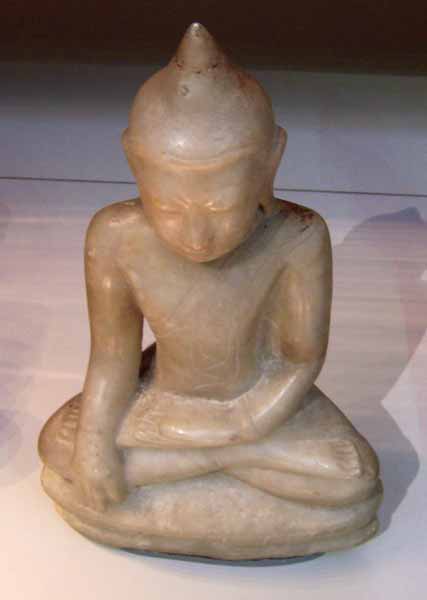Buddha
Summary
Pair of seated Buddhas made of white alabaster. Incised decoration and traces of gilding. With pair of nineteenth century carved wooden stands, also Indian. The Buddhas are seated displaying the BHUMISPARSA MUDRA gesture. "seal" of touching the Earth (also known as BHUSPARSA: BHU=Earth), more often called the gesture of "calling the (Goddess) Earth to witness", a reference to the miracle that set the seal on the defeat of Mara (one of the greatest gods in the Domain of Desires and of Death [in his role as the one who places obstacles in the way of those who strive for Enlightenment or Nirvana]; he is regarded as the Tempter, as Satan).The gesture embodys the concept of imperturbability. This MUDRA (gesture), which is made only by figures seated in the Indian manner, consists of touching the throne lightly with fingertips of the right hand, that rests on the right thigh in the vicinity of the knee; the left hand stays on the Buddha's lap.
Display Label
Two boddhisatva figures 1800s Made in India Alabaster with faint traces of gilding Buddhism originated in India in the 5th century BCE, but declined due to competition from Hinduism, Jainism and Islam. It only survived in isolated parts of the Himalayan region and southern India, and today less than 1% of South Asians are Buddhist. Bodhisattva figures can represent either Buddha, or his followers. The cross-legged posture of these figures, and the way they touch the earth with their right hands, show their intention not be distracted from their meditations. John Edward Yates bequest 1934.239a, 1934.239b
Object Name
Buddha
Dimensions
b: 43.8cm
a: 45.7cm
accession number
1934.239/2
Collection Group
Place of creation
India
Medium
Credit
Bequeathed by John Edward Yates
Legal
© Manchester Art Gallery



